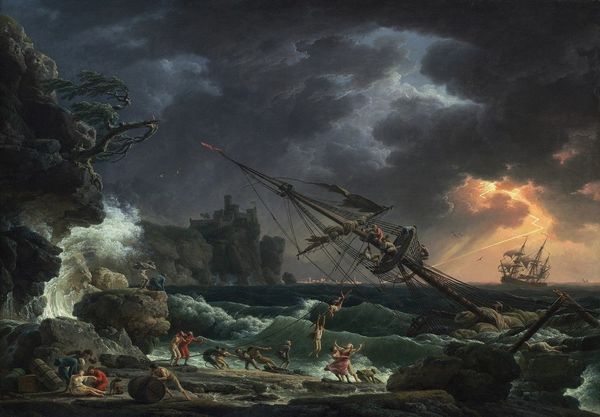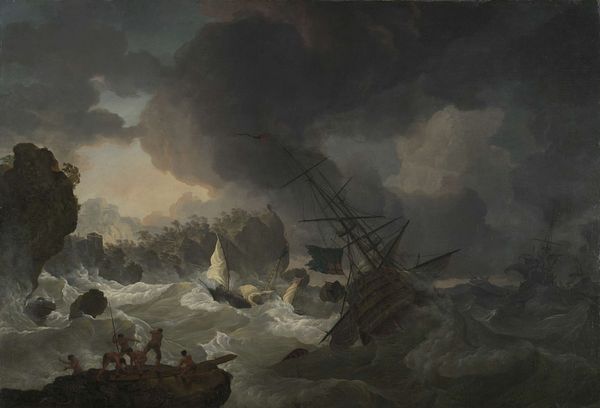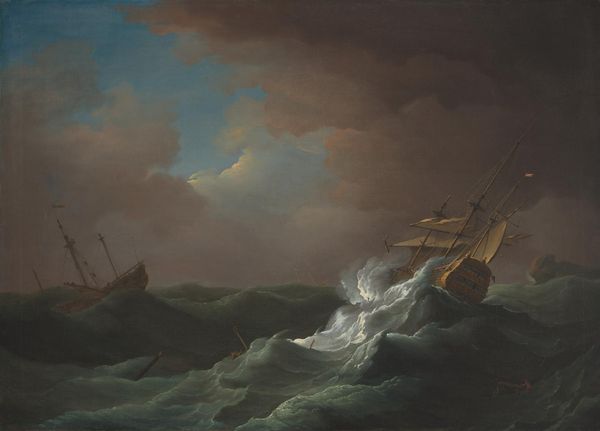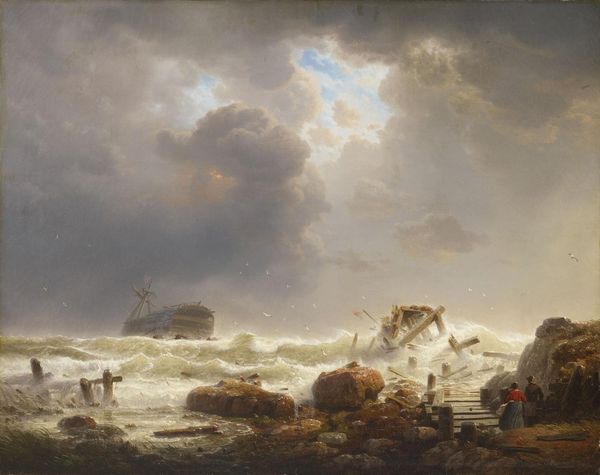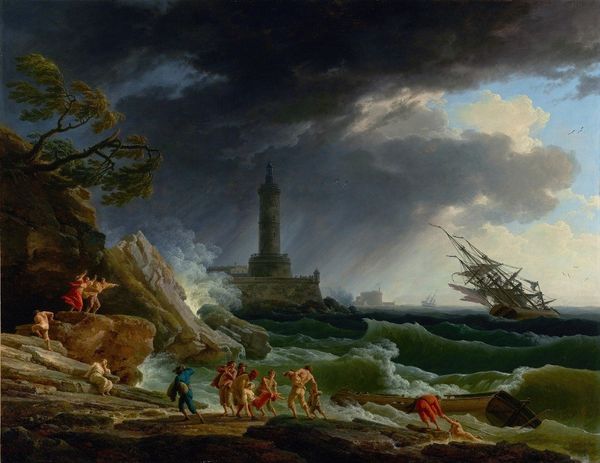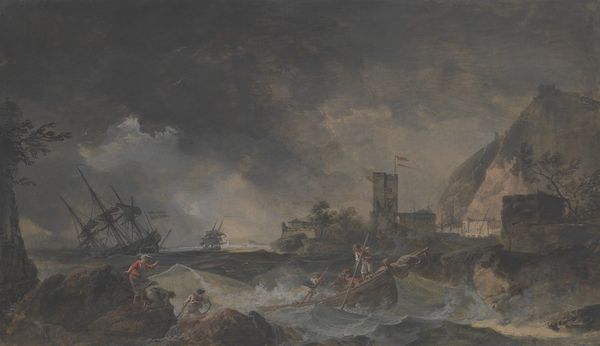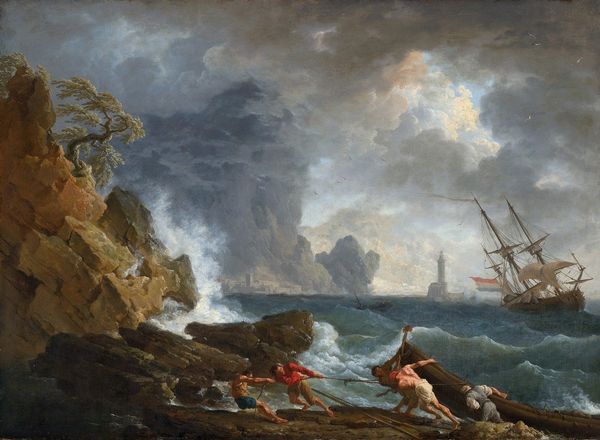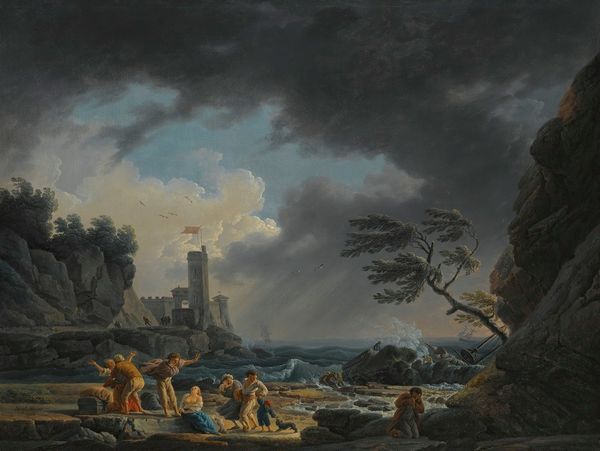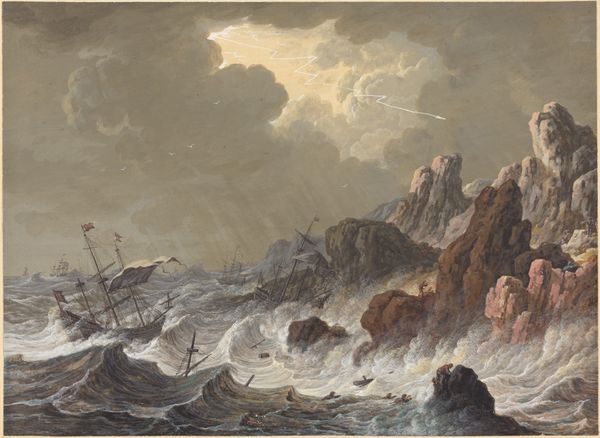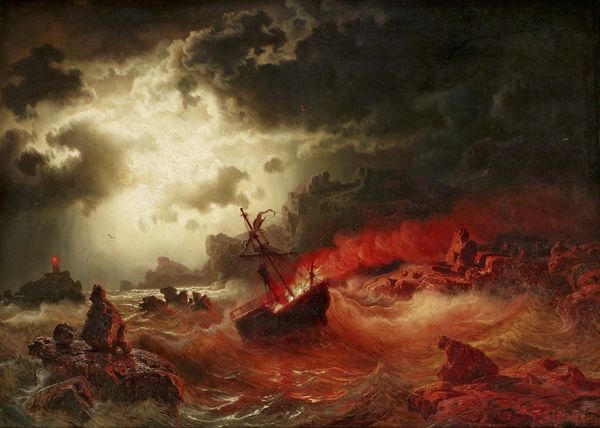
painting, oil-paint
#
narrative-art
#
baroque
#
painting
#
oil-paint
#
landscape
#
figuration
#
romanticism
#
cityscape
#
history-painting
Copyright: Public Domain: Artvee
Curator: This canvas plunges us into the heart of a maritime disaster. Painted by Claude-Joseph Vernet, it’s titled "A shipwreck with figures coming ashore", and encapsulates both the sublime terror and the human resilience often explored within Romanticism. What are your first thoughts on experiencing this scene? Editor: Raw chaos! My immediate impression is of struggle, both against nature's ferocity and a deeper, existential kind. The painting breathes a mood of intense vulnerability; those figures clambering ashore look desperately small against such an immense, raging ocean. Curator: Absolutely. Vernet masterfully uses the iconography of the sea to evoke deeper emotional responses. Notice how the shipwreck isn't just a visual element but a potent symbol of vulnerability and mortality. Ships often stand for journeys and progress, yet here, it’s shattered, highlighting the precariousness of human endeavor. The survivors scrambling to safety symbolize humanity clinging to hope amidst chaos. Editor: The way the artist balances light and shadow intensifies this feeling. The stormy darkness overhead presses down, yet a glimmer of sunrise paints the sky near the horizon, offering a muted promise of survival. That sliver of light, for me, speaks to the era’s growing emphasis on emotion and personal experience, something deeply human rising out of despair. We see those Romantic period ideals taking shape. Curator: And in the coastal town nestled near the cliff, do you detect symbols of civilization juxtaposed against the raw, untamed nature? Vernet’s landscapes often played with this tension between order and chaos. I think that is a social and political subtext—how communities react when tested, how hierarchies adapt. It could even be viewed as a symbolic challenge to aristocratic order during a period of social upheaval in Europe. Editor: Interesting. It makes me think about public response to tragedy, about empathy and the potential for solidarity. Vernet likely wasn't just crafting an aesthetic spectacle; he was framing questions about society itself when facing existential crises. After all, history always influences representation, and history informs how we respond as viewers too. It all adds layers, doesn't it? Curator: Indeed. Looking closer, seeing Vernet’s technique blending Baroque theatricality with the rising Romantic sensitivity... it leaves a lasting mark. A scene of disaster turns into a mirror reflecting our anxieties and, possibly, our potential for endurance. Editor: Perhaps what lingers most is that even when teetering on the edge, that impulse to survive is a powerfully resonant human story across the ages. Thanks to Vernet for capturing this tension on canvas.
Comments
No comments
Be the first to comment and join the conversation on the ultimate creative platform.
